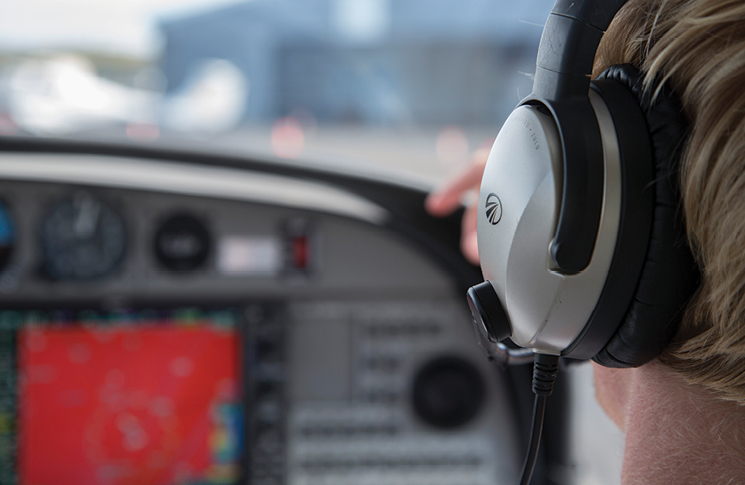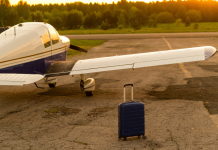1. When cruising in E airspace, a VFR aircraft should squawk:
- code 1200 with altitude reporting
- code 2000 with altitude reporting
- the code assigned by ATC
- STANDBY unless requested by ATC.
2. A TCAS system is:
- an airborne system capable of providing a pilot with a collision prediction and alerting function based on transponder signals from nearby aircraft
- an airborne system capable of providing a pilot with a collision prediction and alerting function based on inputs from the aircraft’s radar system
- a terrain collision alerting system based on radar altimeter returns
- a terrain collision alerting system using predictive algorithms.
3. With reference to a radar transponder, mode C means that the transponder:
- operates in the mode applicable only to ICAO class C airspace
- provides a stronger signal than either a primary radar return or mode A
- reports the aircraft position which is sufficient information for a TCAS system in a nearby aircraft to warn of a collision
- reports the aircraft’s position and altitude both of which are necessary for the collision warning function of the TCAS system in a nearby aircraft.
4. When a typical radar transponder is selected to the “ON” position, it reports:
- position and altitude which is termed mode C
- reports position but not altitude and is termed mode C
- reports position but not altitude and is termed mode A
- reports position and altitude which is termed mode A.
5. The calibrated airspeed (CAS) is the indicated airspeed (IAS) corrected for:
- air density change (non-standard atmosphere)
- instrument error
- position error
- position error and instrument error.
6. True airspeed (TAS) and calibrated airspeed (CAS) are equal:
- in a standard atmosphere
- in an international standard atmosphere (ISA)
- at sea level in the international standard atmosphere
- when the QNH is 1013.2 HPA.
7. In radio telephony communications, the term “HJ” may be spoken:
- only phonetically and has the meaning “sunset to sunrise”
- using the constituent letters (rather than phonetically) and has the meaning “sunrise to sunset”
- only phonetically and it has the meaning “sunrise to sunset”
- using the constituent letters (rather than phonetically) and has the meaning “sunset to sunrise”.
8. Twenty-five (25) US gallons (USG) is equivalent to approximately:
- 30 imperial gallons and the conversion factor is 1.2
- 20 imperial gallons and the conversion factor is 0.833
- 113 litres and the conversion factor is 4.546
- 94 litres and the conversion factor is 3.79.
9. An aircraft engaged in private night VMC flight:
- does not require serviceable landing lights
- requires only one serviceable landing light
- requires two serviceable landing lights
- requires two serviceable landing lights unless there are two separate and independent power sources provided.
10. When landing on RWY 04 with a wind of 070/20, the crosswind component is approximately:
- 10 kt and the headwind component 17 kt
- 10 kt and the headwind component 5 kt
- 17 kt and the headwind component 10 kt
- 5 kt and the headwind component 10 kt
11. An aircraft on a straight-in approach must:
- complete all manoeuvres for approach before reaching 3 miles from the threshold
- give way to traffic already in the circuit
- establish wind direction and strength before beginning the approach
- all of the above
12. Which of the following would indicate a sudden decrease in headwind component during an approach to land?
- a decrease in both indicated airspeed and rate of descent
- an increase in indicated airspeed and a decrease in rate of descent
- an increase in both indicated airspeed and rate of descent
- a decrease in indicated airspeed and an increase in rate of descent
13. When flying an instrument approach procedure (IAP), a QNH may be used if it is:
- obtained from ATC, ATIS, AWIS, CA/GRS, WATIR at a certified aerodrome within 100 nm
- obtained from ATC, ATIS, AWIS, CA/GRS, WATIR at the aerodrome at which the IAP is being flown
- obtained from ATC, ATIS, AWIS, CA/GRS, WATIR before passing the IAF at the aerodrome at which the IAP is being flown
- obtained from ATC, ATIS, AWIS, CA/GRS, WATIR before passing the IAF at the aerodrome at which the IAP is being flown and used within 15 minutes of receipt
14. You are flying an ILS procedure in IMC at Tamworth, a Class D aerodrome. If the localiser course deviation indicator shows between half-scale and full-scale deflection, you:
- must execute a missed approach
- must advise ATC of your course deviation while seeking to centre the CDI
- add 100 feet to the minima and continue the approach
- may continue the approach
15. You are operating a twin-engine aeroplane and plan to overfly a populous area on your departure. What is the minimum height at which you can overfly a populous area?
- 1000 feet above the highest obstacle, within a 600-metre radius of the point on the ground directly below your aircraft
- 1,500 feet above the highest obstacle, within a 300-metre radius of the point on the ground immediately below your aircraft
- a multi-engine aircraft is not subject to minimum altitude over populous area requirements
- 1,500 feet AGL
Answers
- (a)
- (a)
- (d)
- (c) Selection of the ALT or altitude function is necessary for mode C operation and TCAS warnings in nearby aircraft.
- (d) Theoretically IAS will vary between aircraft due to the differences in instrument error.
- (c)
- (b) AIP Gen 2.2–41 for the abbreviation description and AIP GEN 2.2–33 for allowance to pronounce each letter individually rather than phonetically.
- (b) & (d) AIP GEN 2.6–2
- (b) Part 91 MOS Chapter 26.23
- (a) AIP GEN 2.6–5
- (d)
- (d)
- (d) [MOS 14.03] [PEG 91 Operational Rules 15. Navigation p100]
- (d) [Definition; tolerance; MOS 15.11; MOS 11.16] [PEG 91 Operational Rules 13. IFR Take-off and landing p88]
- (a) [MOS 12.01] [PEG 91 Operational rules 14. Cruising levels and minimum heights, figure 19, p95]





